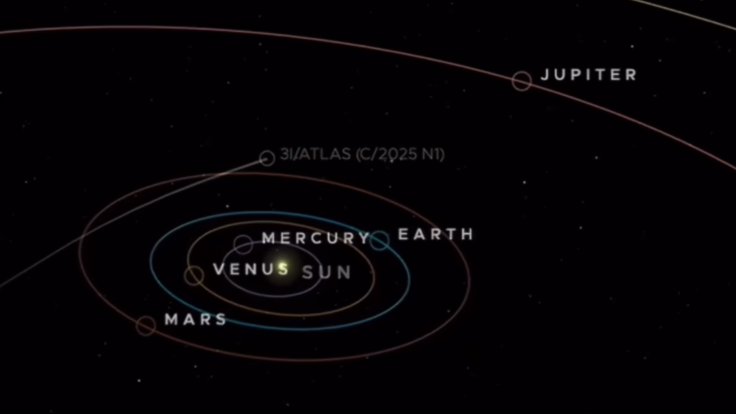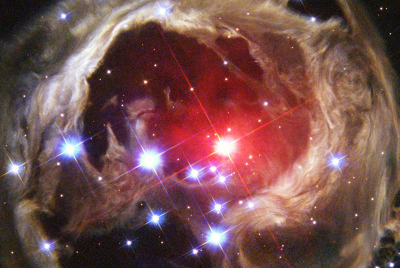Is 3I/ATLAS Trying to Communicate? NASA Scientists Shocked by Sudden Energy Burst

Astronomers are on high alert after interstellar comet 3I/ATLAS streaked into the Solar System, unleashing a surge of energy and gas unlike anything seen before.
Travelling at over 200,000 km/h, the alien object—the third confirmed visitor from another star system—has stunned scientists with its carbon dioxide-rich emissions, deep-space chemistry, and hyperbolic path that ensures it will never return.
Observations from NASA and the James Webb Space Telescope suggest the comet's makeup could rewrite how planets form around distant suns.
Only the third confirmed interstellar visitor after ʻOumuamua and Borisov, 3I/ATLAS may contain pristine material older than the Sun itself, offering a rare glimpse into the birthplaces of other worlds.
A Rare Visitor from Beyond the Solar System
The object, officially designated 3I/ATLAS, was discovered on July 1, 2025, by the Asteroid Terrestrial-impact Last Alert System (ATLAS) survey.
It is only the third confirmed interstellar object to pass through the solar system, following ʻOumuamua in 2017 and 2I/Borisov in 2019, according to NASA.
Scientists said 3I/ATLAS behaves essentially like a comet--a frozen body of gas and dust likely expelled from another star system--but some of its recent activity has surprised them.
NASA reported that 3I/ATLAS is travelling at more than 209,000 kilometres per hour (130,000 mph) as it approaches its closest point to the Sun, or perihelion, on October 29. At that point, it will pass about 200 million kilometres (126 million miles) from the Sun, according to Space.com.
Scientists Detect Sudden Energy Burst
In recent weeks, space telescopes and ground-based instruments detected a sharp rise in the object's emissions, including intense releases of gas and dust.
Data from the James Webb Space Telescope (JWST) showed an unusually high ratio of carbon dioxide (CO₂) to water vapour (H₂O), with CO₂ dominating the object's coma--the gaseous envelope surrounding its nucleus--more strongly than in any previously studied comet.
A preprint study on arXiv.org noted that this composition 'may indicate that 3I/ATLAS contains ices exposed to higher levels of radiation than solar-system comets, or that it formed close to the CO₂ ice line in its parent disk.'
Further analysis by the Hubble Space Telescope suggested that 3I/ATLAS's nucleus could be between 300 meters and 5.6 kilometres wide. However, the comet's heavy outgassing complicates precise estimates, NASA said in a mission update.
'Communicative' or Just Unusual?
The burst of energy and complex emission patterns led some commentators to wonder whether the object could be 'sending signals.'
A Futurism report highlighted its 'anti-tail' — a structure pointing toward the Sun rather than away from it — and its apparent precision trajectory, calling the phenomenon 'strikingly atypical.'
Harvard astrophysicist Avi Loeb, who previously speculated that ʻOumuamua might have been artificial, told the New York Post that 3I/ATLAS's unusual light emissions 'deserve further scrutiny' because 'natural explanations are not yet fully satisfactory.'
However, most researchers caution against such interpretations. In a statement to The Guardian, a NASA spokesperson dismissed claims of alien origin, stating there is 'no evidence of intelligence' behind the outbursts and that the object's activity remains consistent with natural processes.
'Even comets in our solar system can brighten suddenly if a pocket of ice sublimates and drives off dust,' the agency said.
Strange Chemistry and Metal Emissions
Beyond the energy burst, spectroscopic data revealed traces of nickel and cyanide--rare elements in most comets--along with a bright anti-tail visible through the Keck II telescope in Hawaii, according to Futurism.
Researchers using the Transiting Exoplanet Survey Satellite (TESS) also found that the comet began outgassing while still about 6.4 astronomical units (roughly 960 million kilometres) from the Sun, well beyond the range where solar heating typically triggers sublimation, according to another arXiv study.
What Happens Next
3I/ATLAS is expected to grow more active as it nears perihelion late this month. Space.com reported that its ion tail may even cross paths with NASA's Europa Clipper spacecraft, potentially allowing scientists to sample particles originating from another star system — an unprecedented opportunity.
For astronomers, 3I/ATLAS offers a glimpse into the chemistry and dynamics of distant planetary systems.
'These are time capsules that seal in material from their formation billions of years ago,' NASA said, noting that interstellar objects could reveal what other solar systems are made of.
A Cosmic Mystery, Not a Message
While the idea of 3I/ATLAS 'trying to communicate' has captivated the public imagination, experts insist the available evidence points to natural, though extreme, cometary activity.
The sudden burst of energy, rich carbon-based emissions, and early activation make it one of the most unusual objects ever observed--but not necessarily an artificial one.
As the comet races toward the Sun, telescopes across Earth and space will continue tracking its progress.
Whether it is simply a volatile relic from another world or something entirely new, 3I/ATLAS is challenging scientists to expand their understanding of how the galaxy sends visitors our way.
© Copyright IBTimes 2025. All rights reserved.





















